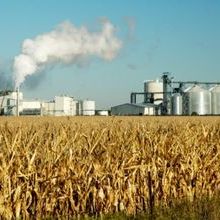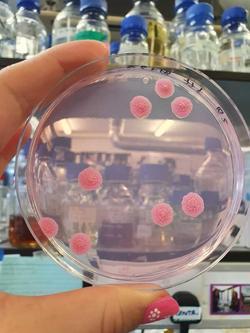Researchers discover ‘switching system’ in fermenting yeast, with potential to improve biofuel production
05 September 2022

Under the ever-growing threat of climate change, researchers are scrambling to find alternative energy sources to fossil fuels. Biofuels, such as bioethanol, are one such alternative, but are expensive and inefficient to produce. But now, researchers in the Buscaino lab at the University of Kent, UK, have discovered that a species of fermenting yeast has an unusual colony morphology that can switch its appearance. This ‘phenotypic switching system’ could one day be utilised to streamline the production of biofuel.
Biofuels can be broadly classified into first and second generation. “The principle is the same,” according to Chloe Uyl, a PhD candidate at the University of Kent, “You use a microorganism to ferment biomass, which generates a range of products, including ethanol that can be used for biofuel.” Where the two types differ is in the type of biomass used. First generation biofuels are mainly produced from edible food crops, whereas second generation biofuels are produced from lignocellulosic biomass, an abundantly available and renewable waste material from plants. “That’s more sustainable than using food resources,” said Chloe.
Unlike food crops, lignocellulosic biomass contains pentose sugars. Unfortunately, the most well-established fermenting yeast, Saccharomyces cerevisiae, cannot ferment pentose sugars and so its second generation bioethanol yields are less than optimal.
To overcome these hurdles, Chloe’s PhD focuses on the potential of a different species of a yeast called Scheffersomyces stipitis (S. stipitis), which has a natural ability to ferment pentose sugars and may be better suited to second generation biofuel production.
Making bioethanol is further complicated by a negative feedback loop that slows down the production. “You’re trying to make ethanol for biofuel, but as the cells are fermenting and producing ethanol, that ethanol then inhibits cell growth,” Chloe explained.
In addition, harsh environmental conditions and inhibitory compounds are required to break down the lignocellulosic biomass before fermentation. These too can slow down the growth of S. stipitis. Ideally, a fermenting yeast would be resistant to these inhibitory compounds and be able to maintain bioethanol production at a fast rate.
Different S. stipitis strains vary in their ability to produce bioethanol and researchers are unsure of the genetic basis for these variations. Chloe grew a selection of S. stipitis strains in a culture medium, which provides nutrients for yeast cells to grow on a plate. One strain in particular caught her attention.

“It has an unusual morphology,” Chloe said. This strain has long, branching filaments called hyphae, which she said has never been reported before in S. stipitis. More unusual still, when this strain is plated on solid media intended to produce single colonies, a range of different phenotypes appear. “There are some that look smooth and round in appearance and then some that are really wrinkly,” she said, “And they've all come from the same initial population, so somehow they've switched.”
By moving one colony phenotype to a new medium, Chloe discovered that it could switch to a different colony phenotype: “I take a smooth colony, re-plate it, and then I get a mix of different colony phenotypes, including some smooth, and some hyphae-like, and vice-versa”.
Chloe believes the unusual morphology and ability to switch its colony phenotype in response to its surroundings could provide better resistance to inhibitory compounds, including ethanol, which currently slow down the fermentation process. “This hyphae colony phenotype shows higher stress resistance to ethanol and inhibitors,” she explained, “So it’s potentially going to produce higher ethanol yields.”
By combining these findings with genetic sequencing, Chloe hopes to better understand the genetic basis of the phenotypic switching system, with the aim of exploiting it to improve second generation bioethanol yields and make alternative energy sources more sustainable.
Chloe Uyl will present these findings at the Microbiology Society’s Focused Meeting, British Yeast Group 2022: From Genomes to Cells. Her flash talk, titled ‘Improving the production of second generation biofuel through exploiting the natural diversity of the yeast Scheffersomyces stipitis’ will take place at 16:55 BST on Thursday 8 September 2022.
